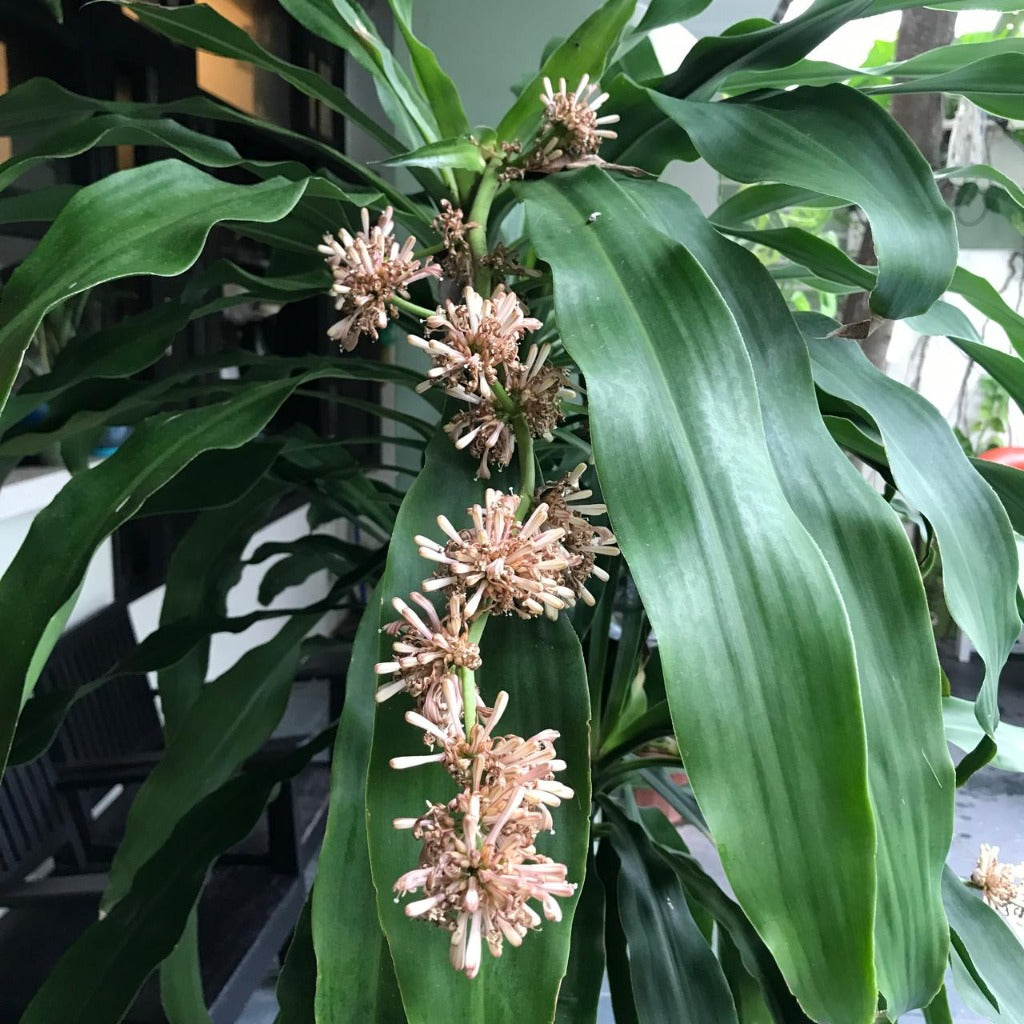Dracaena fragrans
Dracaena fragrans (Corn Plant) is a strongly upright, evergreen shrub with a stout tan topped by rosette of long & sword shaped green shiny leaves. The plant tends to drop its lower leaves. Mature Dracaena can reach over 6’ feet in height with leaves spanning up to 2’ long, though they can be trimmed to fit smaller spaces.
Dracaena fragrans are known for their fragrant flowers and beautiful foliage. While flowering is much less common when grown as a houseplant, mature Dracaena may flower indoors under the correct growing conditions which mimic their natural habitat.
Corn plant flowers emerge from pink colored buds into masses of white flowers that open in the evening. They have a highly fragrant, sweet scent. The flower stalks can range in size from a few inches in length for an indoor plant up to 3 feet (90 cm) long for a large outdoor tree.
Origin: Tropical East Africa
Height: Grows up to 10-15 ft. tall (300-450 cm)
Width: 3-4 ft. wide (90-120 cm)
Light: Dracaena does need to be kept at a brightly lit spot without direct sunlight. Brown scorch marks on leaves are caused by hot, direct sunlight.
Water: Keep evenly moist, although if you have to err, do so on the dry side. (But keeping it too dry will result in brown leaf tips.). Be sure to use a container with a drainage hole and never allow the plant to stand in water.
Humidity: Beware of low humidity. If the humidity drops below 40 percent for an extended time, the tips of the leaves can turn brown. Try misting the plant every day to provide humidity. It s also sensitive to fluoride and excessive salts, so try to use nonfluoridated water and flush monthly to remove fertilizer salts.
Temperature: Growth may cease completely below 70 F, but will resume when warmer weather returns.
Soil: Any good potting mix that drains well.
Fertilizer: During growing, fertilizer with slow-release fertilizer or use a 20-20-20 liquid fertilizer at half-strength every month. Iron deficiency can result in yellowing leaves between the veins treat with an iron drench.
Pests: They are susceptible to thrips and mealybugs.
Pruning: You will find the lower leaves on this plant turn yellow after a period of time which is normal. Remove the lower leaves when they begin to yellow. You may also want to clean the leaves with tepid water using a soft sponge - to help it look attractive.
Eliminates: Dracaena is one of the most efficient plants at removing formaldehyde from the air in your home, as well as other VOCs, including benzene, trichloroethylene, and xylene
Caution: Dracaena plants are not considered poisonous to humans, but are extremely poisonous to dogs and cats with a #2 toxicity level.






















